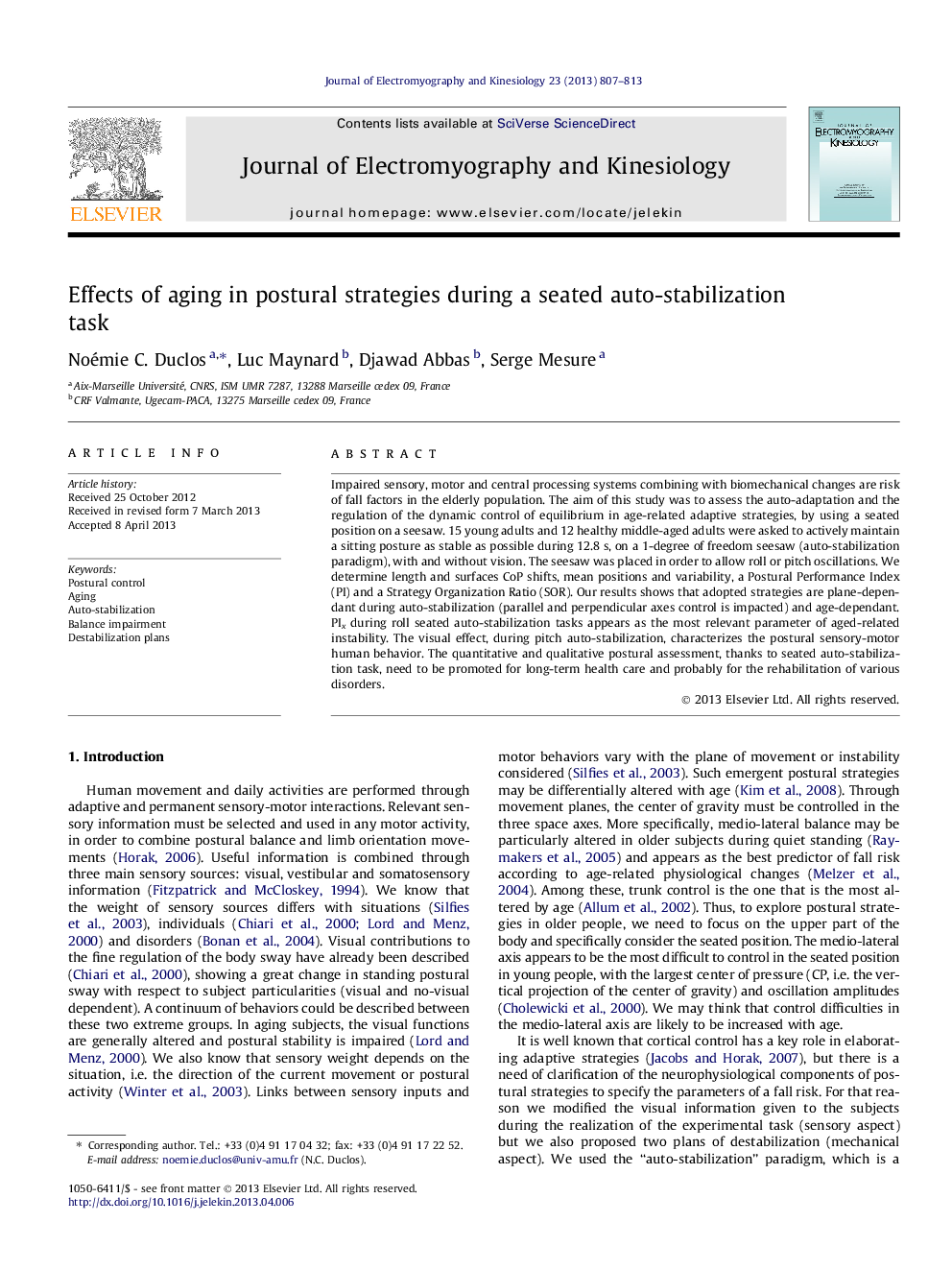| Article ID | Journal | Published Year | Pages | File Type |
|---|---|---|---|---|
| 4064520 | Journal of Electromyography and Kinesiology | 2013 | 7 Pages |
Impaired sensory, motor and central processing systems combining with biomechanical changes are risk of fall factors in the elderly population. The aim of this study was to assess the auto-adaptation and the regulation of the dynamic control of equilibrium in age-related adaptive strategies, by using a seated position on a seesaw. 15 young adults and 12 healthy middle-aged adults were asked to actively maintain a sitting posture as stable as possible during 12.8 s, on a 1-degree of freedom seesaw (auto-stabilization paradigm), with and without vision. The seesaw was placed in order to allow roll or pitch oscillations. We determine length and surfaces CoP shifts, mean positions and variability, a Postural Performance Index (PI) and a Strategy Organization Ratio (SOR). Our results shows that adopted strategies are plane-dependant during auto-stabilization (parallel and perpendicular axes control is impacted) and age-dependant. PIx during roll seated auto-stabilization tasks appears as the most relevant parameter of aged-related instability. The visual effect, during pitch auto-stabilization, characterizes the postural sensory-motor human behavior. The quantitative and qualitative postural assessment, thanks to seated auto-stabilization task, need to be promoted for long-term health care and probably for the rehabilitation of various disorders.
